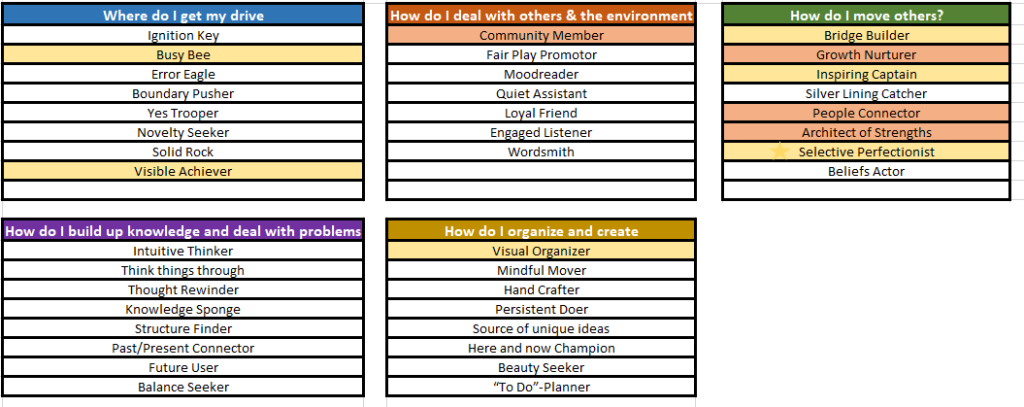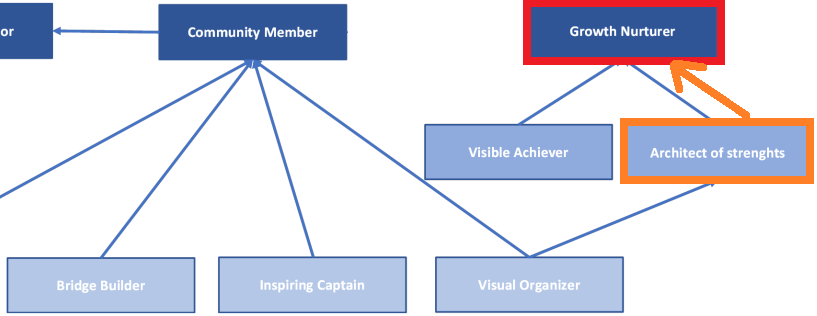My job, my hobby …
Being able to perform tasks in which you are successful, which go very smooth, which energize you and give tons of satisfaction?
On top of that, people call it your job and you are getting paid for it…
Sounds too good to be true?
Nah…

Invest in the human capital
At Algorhythm, we introduced “Talent Management” from the belief that when we make our employees grow, so does our business. We want to grow our employees in a way that motivates them and therefore focus on things that they have a natural aptitude for. Because of this, employees will perform the activities smoother and more successful and that will bring more joy and satisfaction.
We are convinced that this allows our employees to excel and make a difference for our company. By connecting talent to results we create a “win-win” situation …
What is Talent?
First of all: what is Talent in “Talent Management”?
Talent is an intrinsic motivation which makes that you:
- are successful and excel in activities;
- truly enjoy an activity;
- get energized by the activities;
- potentially experience “a flow” when performing the activities;
a “flow” is a mental experience in which you feel very comfortable and completely absorbed in your activity; you forget everything around you and time doesn’t seem to exist.
A talent needs context to become visible. It is possible that talents are hidden for many years if there is no context in which it can be utilized.
Talent needs to be recognized. Most people only become aware about their talents when others name it. It is not easy to recognize one’s own talent, as the behavior is seen as “evident”.
“I appreciate the way you help the intern… You have done that very well.”
“No problem, that is normal that I do that”
“I don’t think that is so evident… Why do you help the intern?”
“I really like to help others and coach them. I enjoy the fact that he is improving his skills after I helped… It energizes me to see him growing. I could really do this for hours!”
“I believe you have the talent of Growth Nurturer”
“You believe that? Isn’t it normal to help others?”
“You are really good at it and you get energized by it… that is a definition for talent”
“Thank you… I have never seen it like that.”
How to?
In Talent Management, all starts with the intrinsic motivation. In the following steps, I will explain how we organize “Talent Management” in Algorhythm.
There are multiple approaches to map talents… In our approach, the talent coach guides the coworker / coachee through the process.
We assume that the coachee can describe the activities which go effortless and provide them satisfaction and energy. Another requirement for the coachee is that he/she is open to feedback and willing to develop him/herself.
1. Align the motivations and link to the talents
During the first talent management session, the talent coach and coachee review the description and context of the 39 Talents; we do this by a “quick talent test”. The coachee scores each talent by giving it a number from 1 to 5 (where 1 is “irrelevant” and 5 is “very relevant”). The relevance can only be decided by the coachee as the trigger for this behavior lies with the person himself.
As Talent coach it is important to challenge the scoring and argumentation. As coachee it is not easy to see your own talent as it is seen as the behavior is seen as “evident”, but that isn’t. Spend sufficient time on the selection and correct scoring of the talents. Having experience with these interviews will help you to assess the scoring better and ask the relevant questions.
Typically, you can expect 8 – 15 talents which score a 4 or 5 and are worth to investigate further.
“I score “Busy Bee” a 5 … because I like to be busy all the time and be involved in useful and meaningful actions.”
“Is the fact that you are busy all the time that makes you happy?”
“Yes, I even make to do lists and I like see at the end of the day that I have achieved something.”
“Are these tasks externally implied? Do you want to please somebody?”
“No no… I make the to do lists myself, I like to add extra tasks and it helps me to see the result at the end of the day”
In the example above, the scoring is probably correct: the trigger for the behavior lies with the person him/herself. You will also notice that when the coachee is explaining the behavior, he/she will do this in an enthusiastic and energizing way. You will notice the energy in the body language, eyes, laugh…
“I score talent “Busy Bee” a 5 … because I am continuously busy with all kinds of tasks at work and at home… the tasks keep coming!”
“Do you like being busy all the time”
“Euh… I assume yes… I have no other choice”
“How do you mean?”
“I am involved in 5 projects because my boss asked me and at home I have 2 toddlers…”
“So it is not your own choice to be busy all the time?”
“No, but my boss asked me to take up 2 extra projects and I couldn’t refuse. Actually, I am looking forward to a calmer period.”
“You are not energized by your busy agenda?”
“No, not at all… in contrary!”
“If it was your own choice you wouldn’t take up the extra tasks”
“Yes, indeed”
Above is an example of a scoring based on the behavior not on the talent. The trigger of the behavior is external. In this case “Busy Bee” should score only a 1 or a 2.
2. Map the talents in clusters and gestalt
To get a better insight in the combination of and relationship between the talents you can:
- map the talents in “talent clusters”… The talent clusters group talents in logical categories: “how do resolve problems and acquire knowledge”, “how do I connect to others”, “how do I move others”, “how Do I organize and create”, “how do I get my drive”.
It can make clear that the coachee gets motivated by a specific category of talents (e.g. “how do I organize and create”) or if the talents are spread over several categories. You can do this easily by mapping the talents with score 4 or 5 in the talent clusters.

An example of a “talent cluster”.
Red marked talent = exact match
Yellow marked talent = applicative
- build a “gestalt”. This is the refined ranking of the talents and the interaction between them. Some talents are utilized to serve another talent. Visualizing it makes it understandable.

Talent “Architect of Strengths” is used to fuel “Growth Nurturer”: “I easily see the unique qualities of people and I know how they can contribute (Architect of Strengths). It gives me even more energy when I can help them grow further and utilize their full potential (Growth Nurturer).
You can perform step 2 immediately together with step 1, but you can expect some changes afterwards. If you perform step 2 some weeks after step 1, the coachee had the time to think of the talents and interaction between them and the mapping will be more accurate. Take into account that the coachee should get the time to self-reflect on these new (self) insights.
3. Coaching sessions
Once the talents are mapped, we can start the coaching on talents.
We organize coaching sessions bi-weekly. During the coaching sessions the Talent coach and coachee review the past period: how does the coachee evaluate the past period, how much of his/her time was fun and energizing? What caused the good / bad feeling during the activities of the past period? What talents could the coachee use and which not?
Together we decide if and how the context has to change to ensure talents can thrive more… How can the Talent coach help in that? What can the coachee do?
We can craft the current tasks, give another perspective to the tasks, focus more or less to specific aspects, agree on the deliverables and not the “how”, …
Conclusion

Having insight on your intrinsic motivation can be a life changer… People can become a SUPERHERO version of themselves
For the individual: as this awareness can be a booster for your resilience and self-confidence. You understand what brings joy and satisfaction. These insights will help you to deal with certain situations, take better decisions, interact with others, … understand and control your mood.
From the company perspective: these insights make clear what is required to cultivate a sustainable and motivational culture for each coworker. By crafting the job of the coworkers, coworkers are more motivated and excel in contributing to the companies’ objectives. The employees can develop their competencies by consciously working with their talents and using them to achieve the objectives. This way, the full potential of each coworker is utilized.
At Algorhythm we truly believe in this sustainable relationship and are happy to see coworkers grow each day.
Eager to hear more about our approach? Contact us via our website: www.algorhythm.be
The principles of Talent Management are based on the theory and books of Luk Dewulf (Boeken – Kiezen voor talent – Voorkomen van burn-out – Luk Dewulf – talentenfluisteraar)
